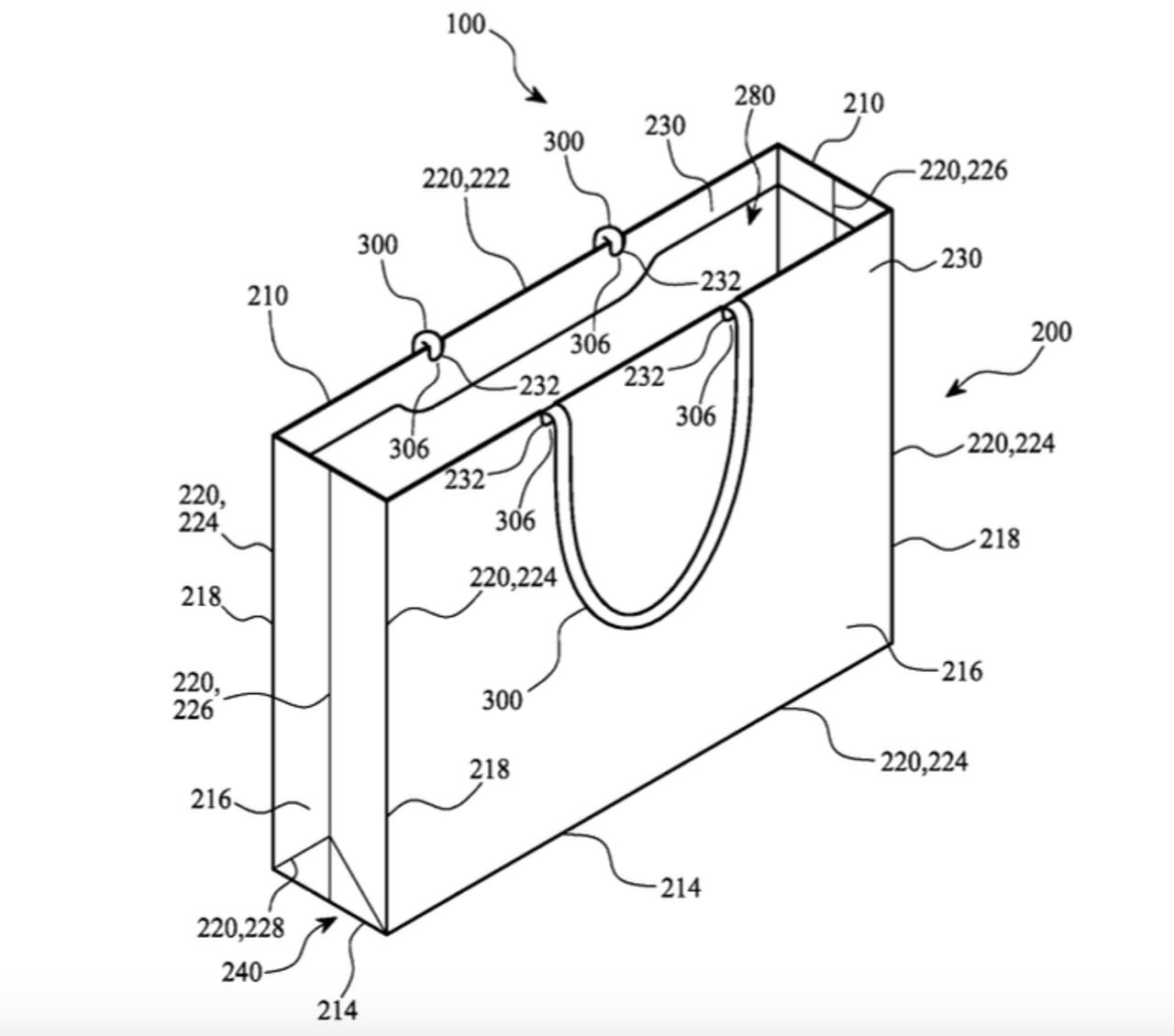After the design heights of the iPhone, Apple now tries to patent the paper bag


Behold, the Apple iBag.
We know Apple is a stickler for detail, right down to the packaging for its iPhones and other hardware. But the company has now entered new territory with a patent application for its paper bags.
The patent, which is simply titled 'bag', was published this month after being filed in early March, just before Apple switched to paper from plastic bags at its retail stores as part of its environmental efforts. The drawings in the document look similar to the bags Apple gave Apple Watch customers.
Just to be clear, Apple highlights in the patent's background notes that "bags are often used for containing items", such as things bought at retail stores.
The first claim Apple makes, which informs its innovations, is that the new device is made of "a bag container formed of white paper with at least 60 percent post-consumer content", where the paper is made from "solid bleached sulfate paper".
While the idea of being granted a patent for a paper bag might seem odd, Apple claims a number of design and construction innovations are required to make a sturdy bag, along with the proportion of recycled paper it wants to use.
For one, the more recycled paper used in bleached paper bags, the weaker they get, which, Apple explains, is why most paper bags are made with far less "post-consumer content" than Apple's 60 percent target.
"SBS [solid bleached sulfate] paper having greater than 40 percent or 50 percent post-consumer content would conventionally be considered too weak (eg, prone to tearing) for use in a bag, particularly a bag with multiple folds such as corner folds or expansion folds that give it shape or allow it to expand from a flat configuration to an open configuration," it says.
The Apple packaging designers behind the patent outline that paper reinforcement inserts may be used to strengthen weak points and provide more resistance to tearing, thus boosting how much recycled paper it can use. Given the millions of bags Apple hands out each day, this approach could make a difference.
"This can help to reduce any environmental impact from production, use, and disposal of the bag," Apple says in the filing.
The handle also contains some novelties. Although it's formed entirely of paper, Apple doesn't want it to feel rough and unfinished like common paper handles, but rather to have the feel and flexibility of a shoelace.
"To effect this feel and flexibility, the handle may be formed of knitted paper fibers in a tight-knit pattern with a large diameter. For example, the handle may be formed in an eight-stitch circular-knit pattern, and may have a diameter greater than 6.5 millimeters."
Apple has also considered where exactly to place the handles on the bag to ensure the handles "droop" below the bag's upper edge for easier storage under shelves in stores.
MORE ON APPLE
- Get your Mac ready for macOS Sierra
- DisplayMate analysis: Apple iPhone 7 has the best LCD display ever tested
- Consumer Reports: iPhone 7 camera does not outperform iPhone 6s
- Apple $14bn tax ruling: Just first of several US targets in EU crackdown?
- Urgent upgrade: Apple II gets its first OS update in 23 years
- TechRepublic: iOS 10 gallery: The big changes in the new version of Apple's mobile OS
- CNET: Messages on iOS 10: How to use all the crazy new features